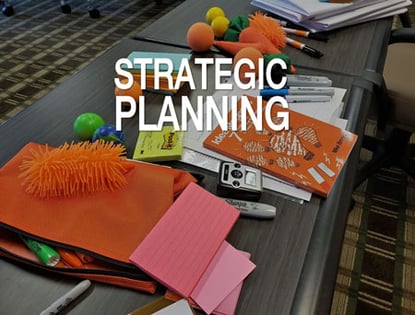I'm chairing the American Marketing Association Marketing Research Conference October 4 - 7. It's going to be a great event, with three educational tracks all tied back to theme, "Making Business Sense of What's Next."
Our main programming objective for the conference is providing ideas, tools, and networking to help researchers approach business more broadly and with a clear means to help lead their companies successfully into the future. Through the conference social media effort, you'll be able to track the conference's progress using the hashtag #amamrc on Twitter and on the conference website, where I'll be blogging along with others next week.
To give you an early sense of the conference tone and content, today's guest Brainzooming columnist is presenting a workshop this Sunday at the conference's start. Sean Buvala is an award-winning trainer who teaches businesses and nonprofit organizations how to improve their business results through the power of storytelling. You learn more about his work at www.seantells.net.
In this piece, Sean challenges researchers (and really anyone communicating in business) to better incorporate framing to fully realize the impact of great storytelling.
The more esoteric your work, the more you need storytelling in your job. Those of you in research, I am talking to you.
Sometimes it is hard for others to understand the ins, outs, and mysteries of research. By using the power of storytelling in your communications, you can create "frames" to highlight, carry, and explain bigger concepts.
Every house I have ever been in has place filled with pictures of family and friends. Rather than just glue these pictures to the wall, the pictures are placed in frames that help draw the eye to the subjects within. In the most artistic homes, frames surrounding pictures have been carefully chosen to emphasize the content of the pictures. More important pictures (the "everybody in the family" type) have the most expensive and sturdy frames. Done well, frames are an extension of the pictures.
Just like picture frames in someone's home, framing complicated and important data in the context of a memorable story protects and carries your message to your listeners. Here's an example.
 You could talk about the collection methods used to complete a survey and how that proves the validity of the data. However, folks want results first. So, instead of talking first about how the data means you must completely drop an ingrained and "sacred cow" program from your company, you could start with the story of "Jack and the Beanstalk," (JATBS) emphasizing how Jack's mother was furious with Jack for trading her sacred cow for a few magic beans. In the end, however, Jack ends up with a goose that lays golden eggs, giving Jack and his mother more than they ever dreamt.
You could talk about the collection methods used to complete a survey and how that proves the validity of the data. However, folks want results first. So, instead of talking first about how the data means you must completely drop an ingrained and "sacred cow" program from your company, you could start with the story of "Jack and the Beanstalk," (JATBS) emphasizing how Jack's mother was furious with Jack for trading her sacred cow for a few magic beans. In the end, however, Jack ends up with a goose that lays golden eggs, giving Jack and his mother more than they ever dreamt.
You'll still present your data, but after you tell your version of JATBS, showing the data that correlates to your conclusion. Then, you might lead a discussion based on the data asking, "Just like the mother in JATBS, what do we fear in what the data tells us? In what ways is this data like magic beans for our company's future?" Finally, end your presentation with a recap of JATBS.
Now, you have framed your data (which is important and needed) in the center of a very familiar and comfortable story. I can assure you the first time you do this you will wade through some discomfort and come out with a presentation that will cement the conclusions into the minds of your listeners.
Here are three things you should know about story and narrative as framing tools:
1. People just want to know, "What's in it for me?"
Co-workers aren't as interested in you job's mechanics as you are. I know you have gone to school to learn how statistics work. However, the people you work with haven't. For most of them, how you collected the data is not nearly as important as what the data means for their work. Storytelling lets you talk about benefits of research, not just mechanics.
2. Stories remind you to speak in the language of the people: your fellow employees.
Although stereotypes of overly detailed researchers may seem unfair, there are those in your company still slightly afraid of you. When they know you will speak understandably, they are more open to hear what you have to say. When you share the story of how others have benefited by what you are proposing, they will feel better about providing tools and time to fulfill your projects. It's far better to talk to others about how Susan at the other office was twice as successful after incorporating research results you reported. In a sense, storytelling allows others to know you are "on their side."
3. Your CFO approves funds for results not information.
Most people hate the process of change. Results are better than promises. Stories are frames that carry results. You will get much more support for a project when folks know how others have benefited from your proposals. How the office across the city became so successful that they now have doubled sales is 100% more effective in getting results than any presentation mired in how the research was conducted.
Your work in research and statistics is vital. Even more vital is your ability to communicate the benefits of your work to the rest of your company. Information framed in the context of story, information carried by understandable narratives, will stick with your fellow staff members much longer than data alone. Take a chance and frame your next presentation in a story. - Sean Buvala



